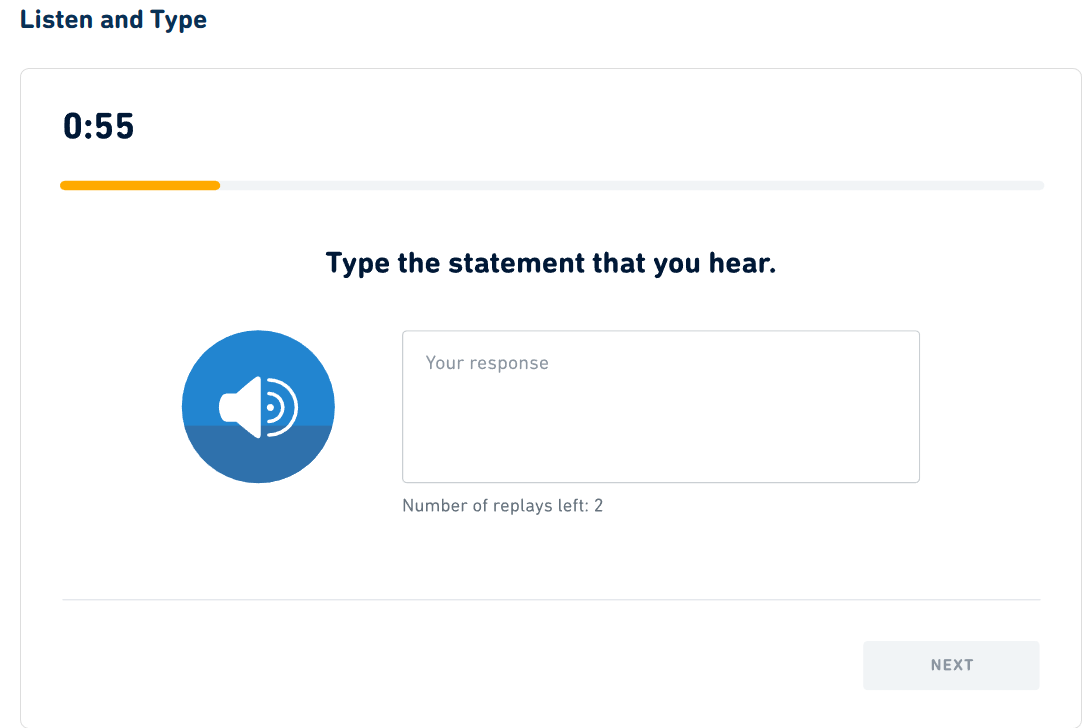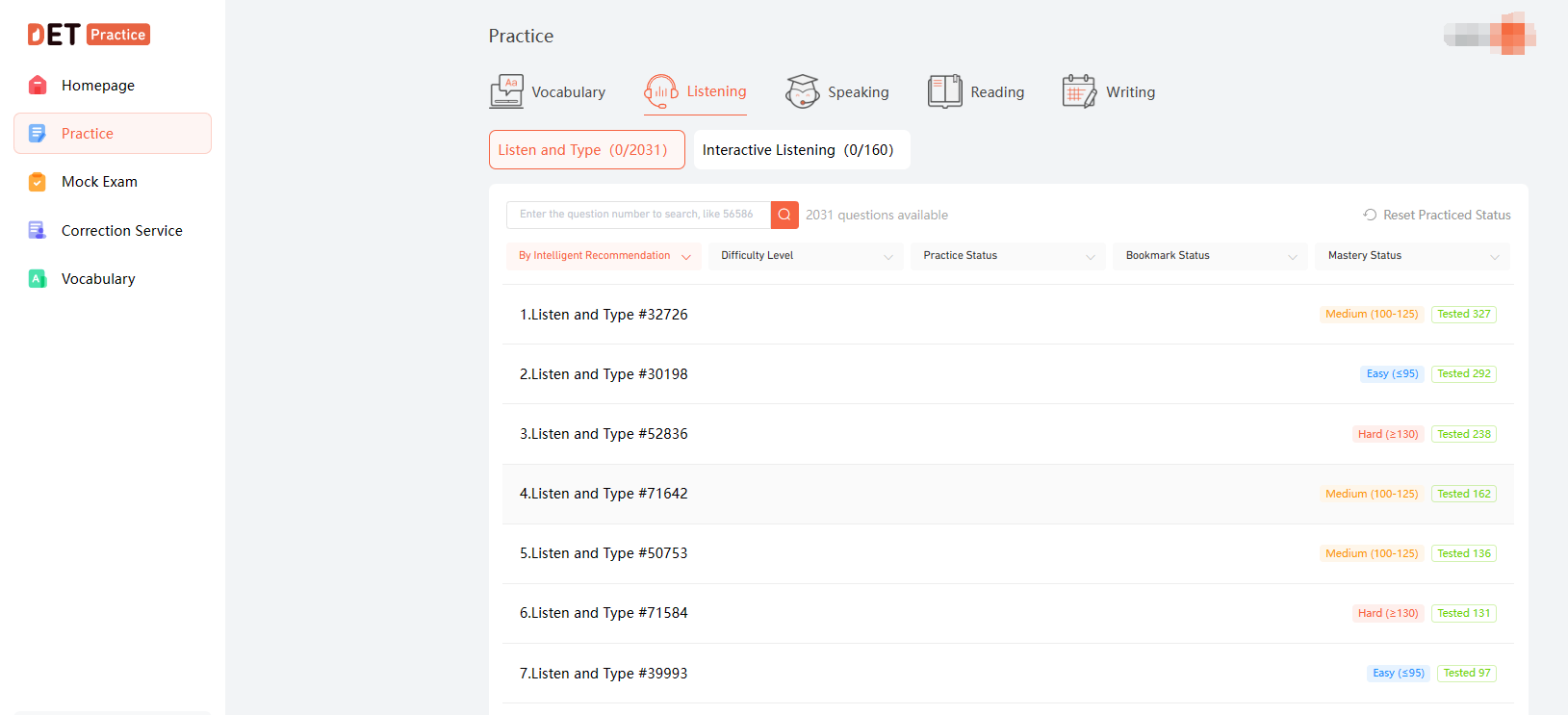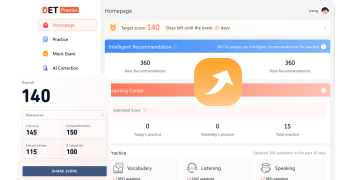Duolingo English Test Question Type Intro 10:"Listen and Type"
The "Listen and Type" section of the Duolingo English Test challenges test-takers to accurately type what they hear within a 60-second timeframe. This post offers a comprehensive overview of the 'Listen and Type' question format, along with effective strategies and useful practice resources.
Understanding the "Listen and Type" Question Type
"Listen and Type" is a question type in the Duolingo English Test (DET) designed to assess the test-taker's listening and typing skills in English. In this format, participants listen to a recording of an English sentence and have 60 seconds to accurately type what they hear. Each sentence is typically brief, and test-takers can listen to it only three times. This question type appears between 6 and 9 times during the test, making it one of the most common formats.

Answering Strategies
l Accurate Typing is Crucial
It is essential to accurately transcribe every word you hear during this dictation task. Your primary responsibility is to type out exactly what is spoken, without making any guesses or interpretations. This includes seemingly minor words such as articles and prepositions. These words may appear insignificant, but they play a vital role in the overall meaning and grammatical correctness of the sentence.
l First Listening Auto-Play
When this question type appears in the official exam, the audio will begin playing automatically. Knowing this in advance allows you to be mentally prepared to start typing as soon as the audio begins. During the first listening, your goal should be to capture as much of the sentence as possible, with a particular focus on content words like nouns and verbs, which carry the core meaning of the sentence. Even if you can't catch everything initially, getting down the key words will make it easier to fill in the blanks during subsequent listening.
l Multiple Listening Opportunities
You have the opportunity to listen to the audio up to three times. After the first listening, use the second and third chances to catch any words you might have missed, particularly those that are typically less emphasized in speech, such as articles and prepositions. These words are often spoken quickly or softly, making them easy to overlook. By replaying the audio and carefully comparing it to what you’ve already written, you can fill in these gaps and ensure a more complete and accurate transcription.
l Sentence Structure Awareness
Understanding whether the sentence is a statement or a question is critical, as this will influence both grammar and punctuation. For instance, a question will end with a question mark, while a statement will end with a period. Correct punctuation is a significant part of your score, so remember to start each sentence with a capital letter and pay attention to commas, which can alter the meaning of a sentence.
l Proofreading and Practice
Before submitting your response, it's important to leave around 10 seconds to quickly proofread for any spelling, grammar, or punctuation errors. Because the time limit is short, it's easy to make small mistakes that could cost you points. Regular practice is also key to success in this question type.
How to Practice "Listen and Type"
To solidify your understanding and skills, I recommend visiting the “Det Practice” website. This platform is specifically designed for Duolingo English test takers and offers a wealth of exercises and challenges.
On the “Det Practice” website, you will be able to:
l Engage in 'Listen and Type' exercises – Enhance your skills through practical, hands-on activities.
l Receive personalized guidance – Access tailored advice and resources based on your individual learning progress and needs.
l Track your learning journey – Utilize the website’s tracking system to monitor your achievements and growth.

Now, head over to Our Website to begin your "Listen and Type" practice!






